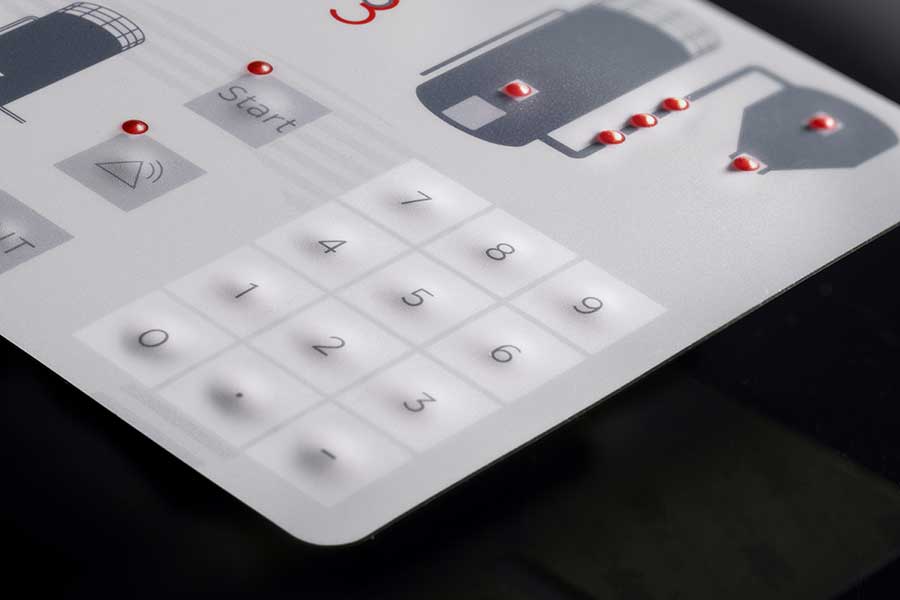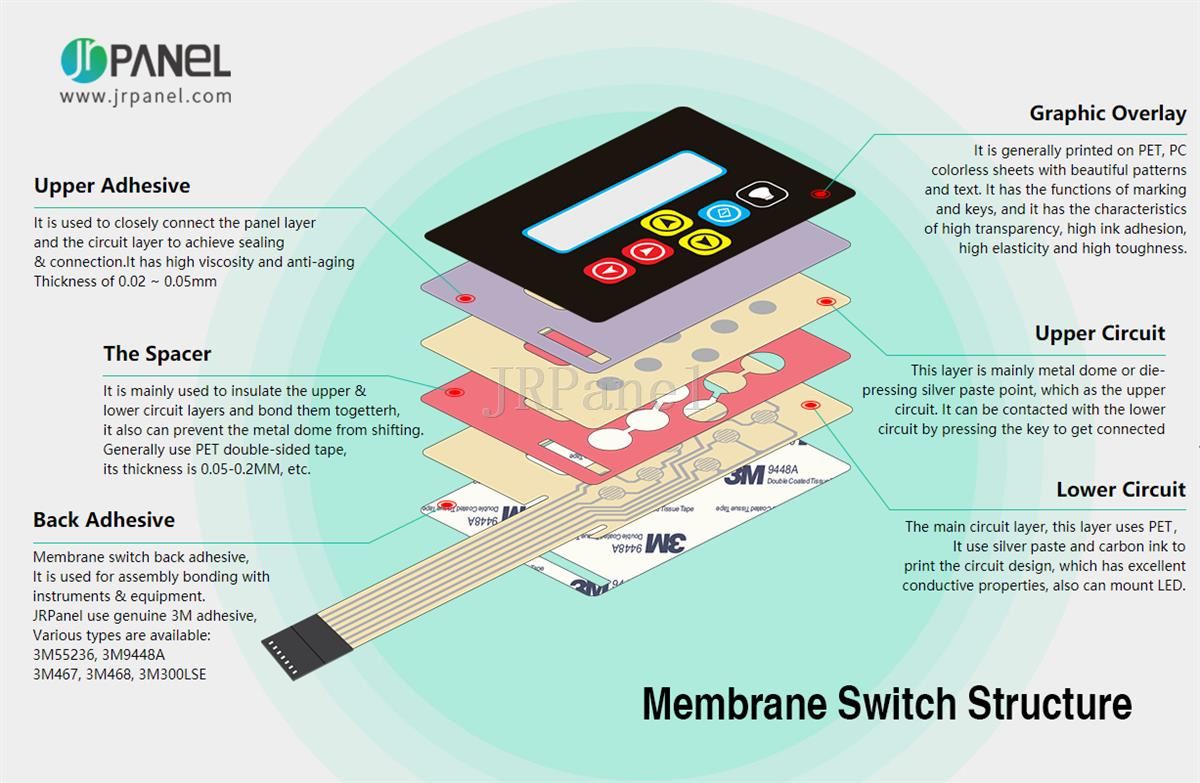Check Out Various Types of Membrane Switch Technologies for Your Requirements
Check Out Various Types of Membrane Switch Technologies for Your Requirements
Blog Article
Just How Membrane Layer Switches Contribute to the Sturdiness of Electronic Control Panels
Membrane layer switches play a crucial duty in improving the longevity of digital control panels, mostly with their multi-layered construction which provides reliable security against environmental variables such as moisture and dust. The absence of moving parts significantly lowers the probability of mechanical failures, making membrane layer changes suitable for demanding applications.
Interpretation of Membrane Switches

Membrane switches are made to be slim and lightweight, making them ideal for applications where room is limited. They can be produced in numerous forms, sizes, and colors, providing flexibility in design that meets visual and useful requirements. Additionally, membrane layer buttons can include various modern technologies, such as responsive feedback and LED signs, improving user experience.
As a result of their construction, membrane switches are often immune to dust, moisture, and general wear, adding to their longevity sought after environments. Their seamless style not just facilitates very easy cleaning but additionally decreases the risk of mechanical failure, making them a preferred selection for suppliers looking for trusted interface in their electronic control board.
Protection Against Ecological Variables
The layout of membrane changes inherently offers a degree of protection against various environmental aspects, which is vital for keeping functionality in tough conditions - Membrane Switch. These buttons are typically built with layers of flexible products that shield interior components from wetness, dust, and contaminants. By enveloping the circuitry, membrane layer switches reduce the threat of brief circuits and corrosion, which can considerably harm performance
Furthermore, the use of robust adhesives and sealers during production improves their resistance to ecological obstacles. Membrane buttons can withstand exposure to chemicals and solvents, making them appropriate for industries such as food handling and healthcare, where health and cleanliness are extremely important. Their seamless surface area style additionally stops the accumulation of dust and bacteria, promoting simpler cleansing and maintenance.
Temperature level changes are an additional environmental problem, and membrane buttons are engineered to function successfully across a vast array of temperatures (Membrane Switch). This flexibility makes sure that control board remain functional in different settings, from commercial settings to consumer electronic devices
Influence On Individual Interaction
Customer interaction with digital control panels is dramatically influenced by the design and capability of membrane switches. These switches supply a tactile interface that boosts the overall individual experience, permitting intuitive navigation and control. Their responsive nature makes sure that users receive instant comments upon activation, which is vital for jobs calling for accuracy and effectiveness.
Moreover, the smooth surface of membrane switches helps with simple cleansing and upkeep, promoting individual Continue confidence in the reliability of the user interface. This sanitation is specifically essential in settings where hygiene is vital, such as clinical or food processing settings. Additionally, the compact and light-weight layout of membrane layer changes adds to the aesthetic appeal of control panels, urging customer interaction with a modern and sleek appearance.
In addition, the assimilation of visual elements, such as published symbols and backlighting, assists users quickly recognize functions, lowering the finding out curve related to new equipment. Therefore, individuals can run gadgets better, bring about boosted efficiency and contentment. In summary, membrane layer buttons play a crucial function in enhancing user communication by combining capability, aesthetic appeals, and ease of usage, ultimately bring about boosted operational performance.
Style Adaptability and Personalization
Design adaptability and modification are vital aspects of membrane buttons, enabling makers to tailor electronic control board to specific applications and individual demands. This adaptability permits the integration of different layout components, such as colors, graphics, and structures, which can boost the visual appeal and individual involvement of the control panel.
Membrane switches can be customized in shapes and size, suiting a vast array of devices and applications, from industrial equipment to customer electronic devices. This flexibility makes sure that manufacturers can create intuitive interfaces that straighten with user expectations and operational requirements. Furthermore, the ability to integrate distinct functions such as backlighting or responsive responses further improves functionality, permitting an extra interactive experience.
Moreover, the manufacturing procedure for membrane layer switches supports the fast prototyping of styles, allowing manufacturers to iterate and refine their ideas quickly. This capability navigate to this website not only accelerates the development timeline but also guarantees that the end product meets particular functional and aesthetic standards.

Cost-Effectiveness and Long Life
Cost-effectiveness and long life are considerable advantages of membrane layer buttons, making them an appealing choice for producers and end-users alike. These switches are typically more economical to create than standard mechanical switches, primarily as a result of their streamlined manufacturing processes and the lowered variety of elements required. This price advantage expands not only to initial production but likewise to long-term functional costs, as membrane buttons commonly require much less maintenance and have a lower failing rate.
In addition, the durability of membrane switches over contributes to their total worth. Constructed from long lasting products, helpful hints they are resistant to environmental elements such as moisture, dirt, and chemicals, which can lead to premature wear in various other switch types. The lack of relocating parts minimizes mechanical failing, allowing membrane layer switches over to maintain performance over extended durations.
This resilience is specifically beneficial in applications needing constant efficiency under requiring conditions, such as clinical devices and industrial tools. Ultimately, the mix of cost-effectiveness and long life makes membrane changes a financially practical option for manufacturers, offering trusted services that stand up to the examination of time while optimizing budgetary considerations.
Conclusion
In conclusion, membrane buttons significantly enhance the resilience of digital control panels via their durable building and protective features - Membrane Switch. Overall, membrane layer switches over represent a reputable and affordable choice for boosting the long life and performance of electronic control systems.
Report this page